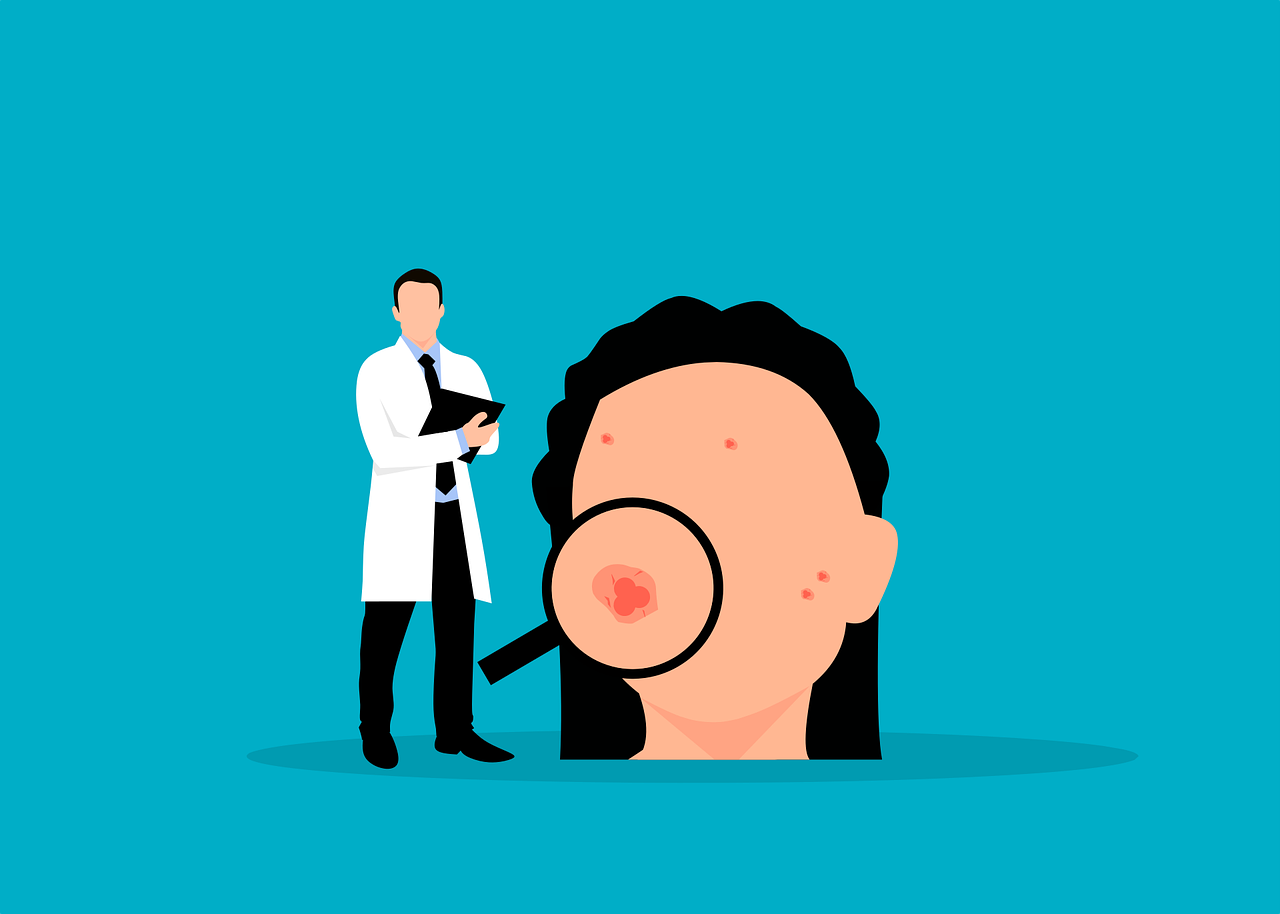What is Rosacea? Everything You Need to Know About This Skin Condition

Rosacea is a skin condition that affects an estimated 16 million Americans. It causes the skin to flush and turn red, often with a bumpy texture.
In some cases, rosacea can also cause swelling and eye irritation. If you are experiencing these symptoms, it is important to see a doctor to get diagnosed and find the best treatment plan for you.
In this blog post, we will discuss everything you need to know about rosacea: what causes it, how to treat it, and more!

What is rosacea and what are the symptoms|What causes rosacea and who is most at risk|How to treat rosacea|Additional tips for managing rosacea|In Conclusion|Frequently Asked Questions
1. What is rosacea and what are the symptoms
Rosacea is a chronic skin condition that causes redness and inflammation on the face.
Rosacea is most common in fair-skinned people between the ages of 30 and 50, and it affects both sexes equally.
According to the Mayo Clinic, the first signs of rosacea are often redness on the cheeks, nose, chin, or forehead.
The redness may come and go, and it may be accompanied by spider-like blood vessels on the face, a burning or stinging sensation, dryness and tenderness of the skin, and inflammation.
If left untreated, rosacea can eventually lead to enlarged pores, thickening of the skin, and even permanent damage to the eyes.
Common symptoms of rosacea include redness, flushing, bumps, and pimples. The condition can also cause the appearance of small blood vessels on the face, as well as watery or irritated eyes.
If you think you may have rosacea, it is important to see a dermatologist.
2. What causes rosacea and who is most at risk
While the exact cause of rosacea is still unknown, there are several factors that may contribute to the condition.
Rosacea is most commonly seen in fair-skinned adults between the ages of 30 and 50. Women are affected more often than men, but men typically experience more severe symptoms.
People with a family history of rosacea are also at higher risk for developing the condition.
Sun exposure, emotional stress, hot weather, wind, heavy exercise, alcohol use, and certain medications can all trigger flare-ups.
In some cases, small blood vessels in the face may widen and become visible (a condition called telangiectasia).
In more advanced stages, rosacea can cause the formation of bumps and pimples on the face (a condition called papules and pustules).
In rare cases, rosacea can also cause swelling of the nose (a condition called rhinophyma).
3. How to treat rosacea
While there is no cure for rosacea, there are a number of treatments that can help to control the symptoms.
For mild cases, over-the-counter creams and gels containing ingredients such as metronidazole or azelaic acid can be effective. These treatments help to reduce inflammation and redness.
SkinCeption Rosacea Relief Serum
Skinception Rosacea Relief Serum provides immediate and long-term relief for dry, itchy, and inflamed facial skin.
Skinception Rosacea Relief Serum is a gentle and effective alternative to moisturizing creams that have been specifically designed for the hypersensitive skin of customers prone to rosacea outbreaks.
For more severe cases, prescription medications such as oral antibiotics or isotretinoin may be necessary.
In addition, laser and light therapies can be used to help reduce the appearance of redness and visible blood vessels.
With proper treatment, most people with rosacea are able to manage their symptoms and enjoy a good quality of life.
4. Additional tips for managing rosacea
In addition to avoiding triggers and using gentle skincare products, there are a few other tips that can help to manage rosacea.
First, it is important to protect your skin from the sun. Wear a wide-brimmed hat and sunblock with an SPF of 30 or higher.
Second, be sure to keep your skin clean and avoid irritating it. Wash with a mild cleanser and lukewarm water, and pat your skin dry instead of rubbing it.
Third, moisturize regularly to help reduce irritation and redness. Choose a non-comedogenic moisturizer that is designed for sensitive skin.
And finally, consider talking to your doctor about medication options. There are a number of prescription medications that can help to control inflammation and other rosacea symptoms.
In Conclusion
Rosacea is a common skin condition that causes redness, flushing, and bumps on the face. Although there is no cure for rosacea, there are a number of treatments that can help to control the symptoms. With proper treatment, most people with rosacea are able to manage their symptoms and enjoy a good quality of life.
Frequently Asked Questions
Does rosacea ever go away?
Rosacea may go away for a while, but it does not go away forever. If it is not treated, permanent damage can happen to a person's eyes and skin. This damage can be very serious and can cause redness on a person's skin permanently.
What foods to avoid if you have rosacea?
- alcohol
- spicy foods
- cheese
- caffeine
- hot drinks
Does drinking water help with rosacea?
Drinking water can help clear toxins from your skin. Choose cold water to cool your body and keep blood vessels from widening. This is what causes your skin to look red.
Does rosacea get worse with age?
Yes. Although rosacea has a variable course and is not always predictable in each individual, it does tend to deteriorate with time, especially if left untreated.
Does rosacea affect eyes?
Ocular rosacea is when your eyes are red, itchy, and burning. Often times this happens to people who have rosacea, which is a condition that makes your skin red on your face.
Sometimes ocular (eye) rosacea is the first sign that you might get the same condition on your face.

